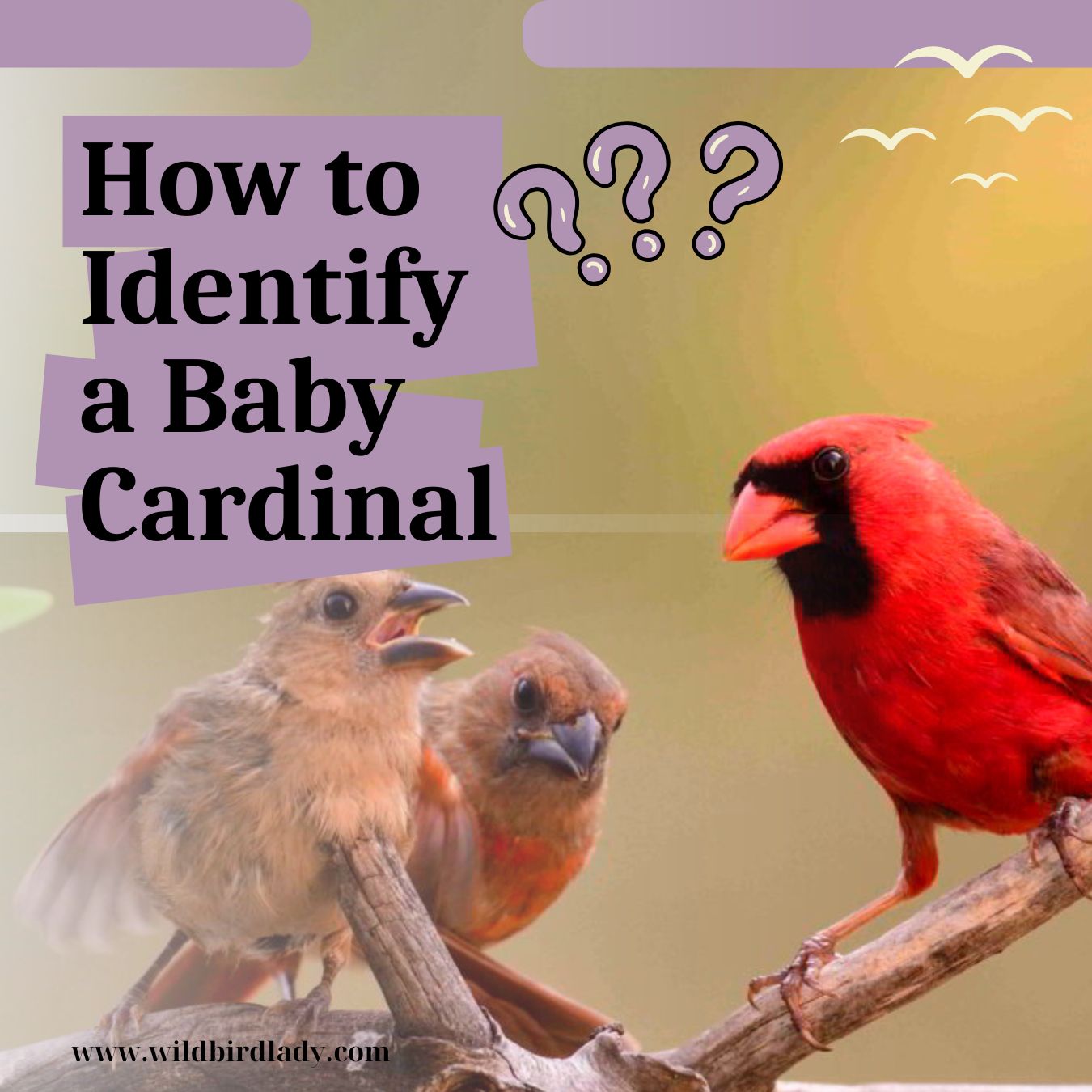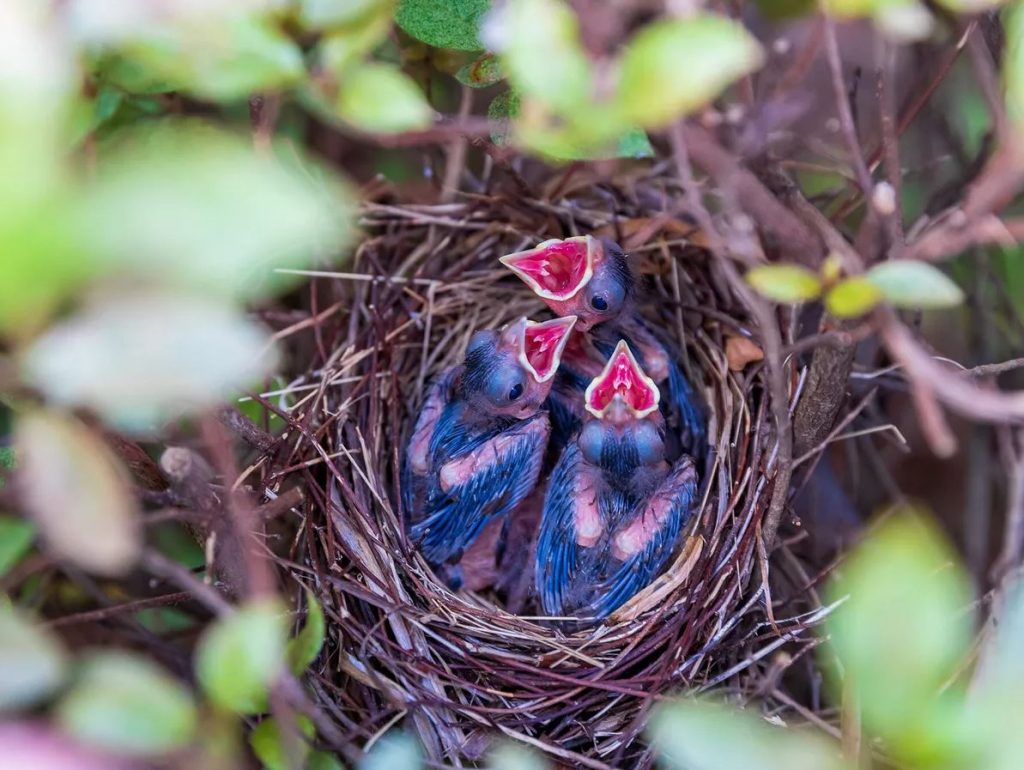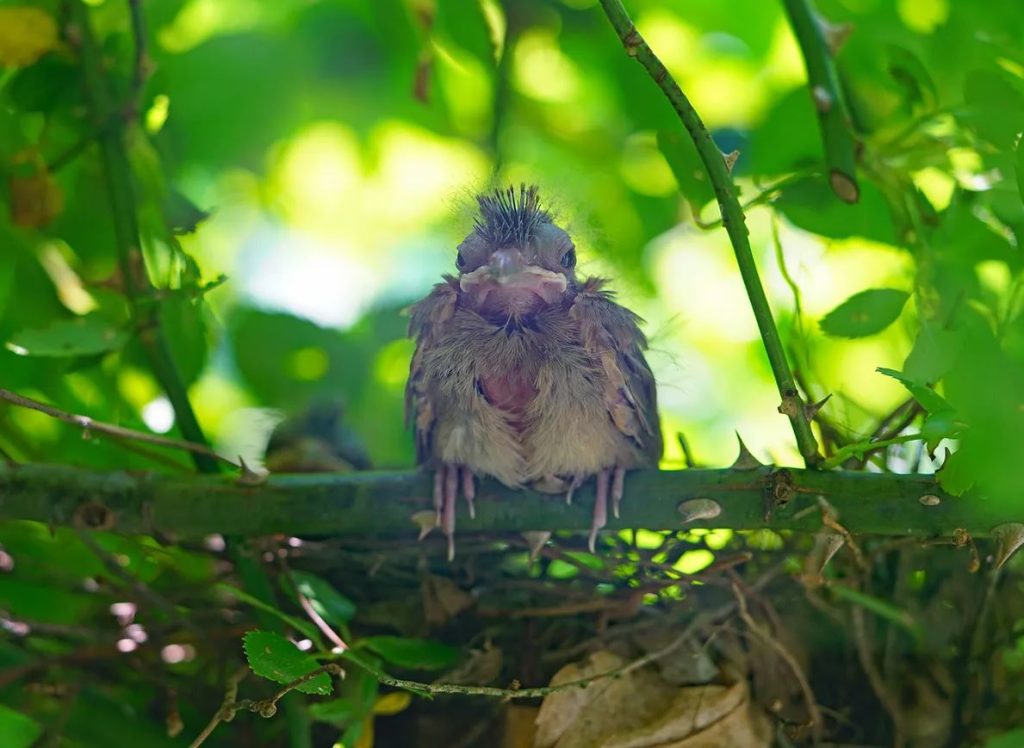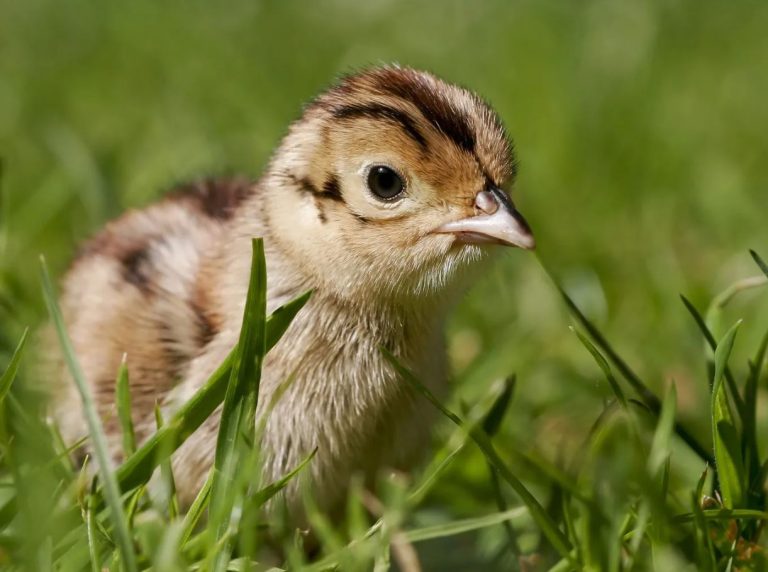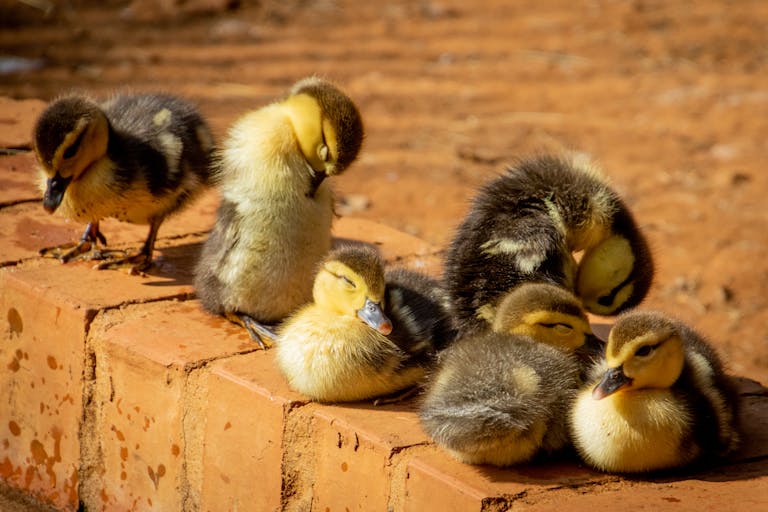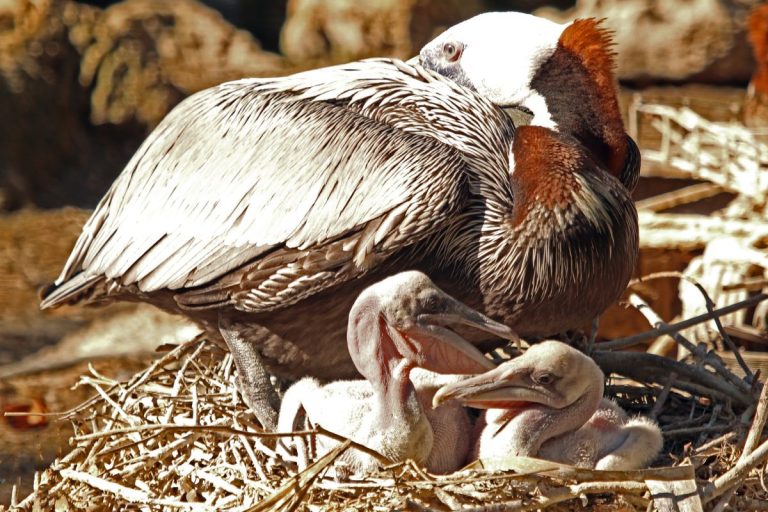How to Identify a Baby Cardinal: Color, Sounds, and Behavior Explained
Introduction: Meet the Baby Cardinal
If you’ve ever spotted a tiny, fluffy bird with a barely-there crest hopping around your backyard and wondered, “Is that a baby cardinal?”—you’re not alone.
The baby cardinal, also called a cardinal chick or fledgling, can be surprisingly hard to identify. Unlike the stunning red males or elegant tan females, these young birds look quite different from their adult counterparts.
In this complete guide, we’ll break down everything you need to identify a baby cardinal—from their color changes and vocalizations to their nesting habits and behavior. Whether you’re a curious birdwatcher, a backyard feeder, or someone who just found a cardinal nest, you’re in the right place.
What Does a Baby Cardinal Look Like?
Appearance at Birth (Hatchlings)
Newborn cardinals are tiny, blind, and nearly featherless. They have closed eyes, translucent pink skin, and oversized yellow-orange beaks.
- Size: Less than 2 inches long
- Weight: About 3-4 grams (lighter than a penny!)
- Feathers: Sparse down or none at all
- Color: Pale pink to reddish skin
They’re completely dependent on their parents for warmth and food.
Did you know? Baby cardinals hatch about 11–13 days after eggs are laid.
Nestling Stage (0–7 Days Old)
After hatching, baby cardinals develop fuzzy down feathers. Their eyes slowly begin to open around day 3–4.
- Color: Still mostly pink but starting to show grayish fuzz
- Beak: Prominent and orange, used to beg for food
- Crest: Not yet developed
At this stage, you’ll only see them inside the nest, usually well-hidden in dense shrubs or low branches.
Fledgling Stage (7–14 Days Old)
This is when most people encounter a “baby cardinal” hopping awkwardly on the ground or in low bushes.
- Feathers: Light brown or gray body feathers
- Face: Black mask begins to show faintly
- Beak: Still bright orange and oversized
- Crest: Small and flat, sometimes not visible
Juvenile males and females look almost identical. They resemble female cardinals but are fluffier, duller, and lack the sharp contrasts of adult plumage.
Juvenile Stage (2–4 Weeks Post-Fledging)
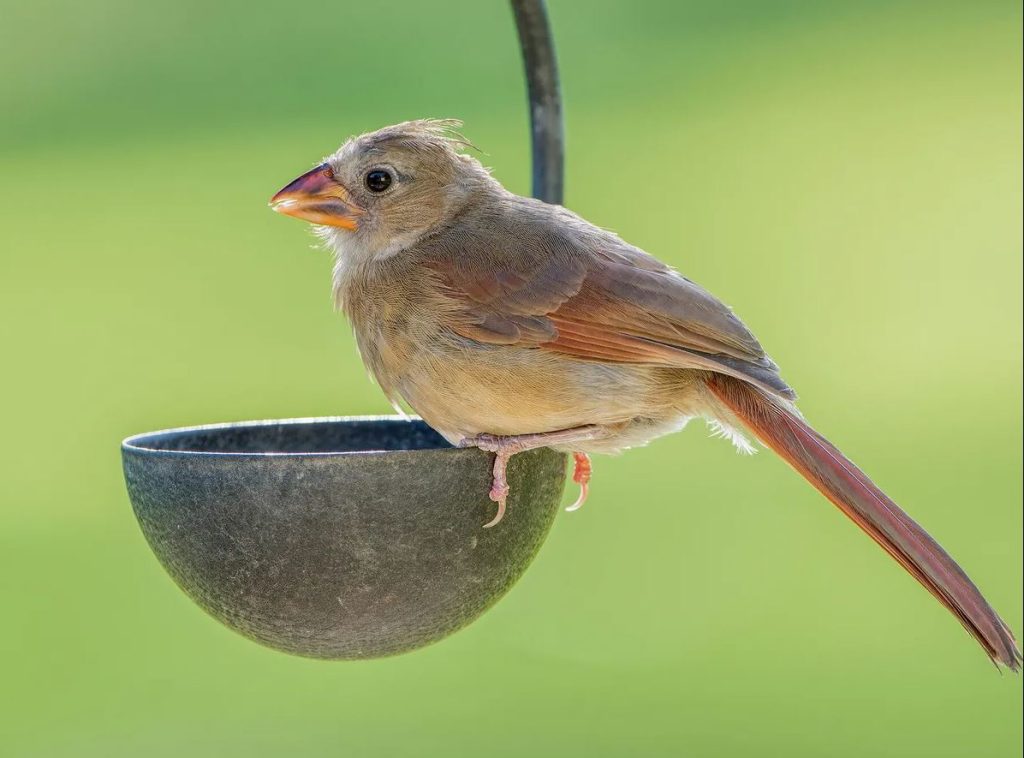
Credit: BirdFact

Credit: BirdFact
After a couple of weeks outside the nest, baby cardinals start molting into their adult feathers.
- Male juveniles: Begin developing red plumage on chest, wings, and crest
- Female juveniles: Transition to soft tan with some red tinges
- Eyes and beak: Eyes darken, beak becomes stronger but still orange
Tip: Use binoculars or a zoom lens to spot these subtle feather transitions in your backyard.
How Baby Cardinals Change as They Grow
| Age | Key Traits | Notes |
|---|---|---|
| Day 1–3 | Bare skin, closed eyes | Stay in nest, totally helpless |
| Day 4–7 | Grayish down, open eyes | Parents feed constantly |
| Day 7–14 | Start hopping, open wings | Fledge around Day 9–11 |
| Week 3+ | Molting, color changes | Learn to forage and fly |
Baby Cardinal Sounds: What to Listen For
Baby cardinals have distinct vocalizations that evolve rapidly as they grow. These sounds are quite different from the crisp whistles of adult cardinals—and if you know what to listen for, you can identify a baby cardinal even when it’s hidden in the bushes.
🔈 Begging Calls
Soft, high-pitched “cheep cheep”, often repeated quickly and rhythmically.
These calls are used to signal hunger or attract parental attention.
🎧 Listen here: Begging Call of a Baby Northern Cardinal – ML146071
📍 Recorded by Paul Marvin in Florida, USA
📸 © Macaulay Library
You’ll often hear this sound from the nest or a nearby shrub when chicks are expecting food.
🔈 Contact Calls
Once baby cardinals leave the nest, they begin making short, simple chirping sounds to stay in touch with parents and siblings. These are less frantic than begging calls and serve as a type of family GPS.
🎧 Example (fledgling contact call): Northern Cardinal Fledgling Contact Call – ML151343
📍 Recorded by Wil Hershberger in West Virginia, USA
📸 © Macaulay Library
These chirps are especially frequent when the fledgling is exploring or hidden in foliage.
🔈 Mimicry and Song Learning
As male juveniles mature, they begin mimicking adult songs. Early attempts are soft, broken, and squeaky—like a beginner trying to whistle.
🎧 Listen to a juvenile male practicing: Juvenile Cardinal Learning Song – ML155844
📍 Recorded by Bob McGuire in New York, USA
📸 © Macaulay Library
It’s not uncommon to hear these clumsy songs early in the morning, as young males experiment with vocal range.
🎤 Tip for Birders: Baby cardinal calls are softer and more variable than adults. A good pair of ears and careful listening will help you spot fledglings even before you see them.
Where to Find Baby Cardinals (Nesting Habits)
Cardinals are non-migratory and breed in much of North America, especially the eastern and central U.S.
Nesting Sites
- Shrubs, thickets, vines, or low trees (3–10 feet off the ground)
- Well-hidden with thick foliage
- Often near human dwellings or gardens
Breeding Season
- Begins in early spring (March) and may last until August
- 2–4 broods per season are common!
Nest Facts
- 2–5 eggs per clutch
- Incubation: 11–13 days
- Nestling period: ~9–11 days before fledging
Both parents feed the babies, but the female handles most incubation, while the male guards and supplies food.
How Baby Cardinals Behave
Understanding a baby cardinal’s behavior helps you spot and protect them.
Fledgling Wandering
- Newly fledged birds can’t fly well
- They hop, flutter clumsily, and may seem “abandoned”
- Do not pick them up unless they’re in immediate danger
Feeding Time
- Parents feed chicks every 15–30 minutes
- Diet includes insects, caterpillars, and soft berries
- Fledglings are fed for 2–3 weeks after leaving the nest
Learning Through Play
- Baby cardinals “practice” pecking, fluttering, and singing
- Stay close to parents during this critical learning period
How to Help Baby Cardinals (If You Find One)
If you encounter a baby cardinal on the ground or in your yard, here’s what to do:
✅ Observe From a Distance
- Most fledglings are not abandoned
- Parents may be nearby but out of sight
✅ Leave It Alone Unless in Danger
Only intervene if:
- The bird is in the middle of a road
- A predator is nearby (e.g., cat, dog)
- It’s injured or bleeding
Gently move the bird to nearby cover—not back to the nest, as this may be rejected or dangerous.
Don’t Feed Baby Cardinals Yourself
They require a specialized diet and feeding technique. If orphaned, contact a licensed wildlife rehabber.
What Do Baby Cardinals Eat?
Like many songbirds, baby cardinals have a fast metabolism and grow rapidly, so they require a high-protein, nutrient-dense diet—far different from the seed-heavy menu of adult cardinals.
Early Days: Insect-Heavy Diet for Nestlings (0–7 Days)
During their first week of life, baby cardinals eat almost exclusively soft-bodied insects, which provide the protein and amino acids essential for tissue and feather development.
The parents—both mother and father—take turns hunting and bringing food to the nest every 15–30 minutes, from dawn to dusk.
Common insects fed to nestlings include:
- Caterpillars – Soft, easy to digest, and loaded with protein
- Crickets – A great source of calcium and fiber
- Beetle larvae – Particularly grubs and mealworms
- Grasshoppers – Often broken up by the parents before feeding
- Spiders – High in protein and beneficial amino acids
Fun fact: Unlike some birds, cardinals do not regurgitate food for their young. Instead, they deliver insects directly into the chicks’ gaping mouths.
Transitional Diet: Introducing Fruits (7–14 Days)
Once the chicks enter the fledgling stage, they begin exploring outside the nest. While parents still supply most of their food, they start mixing in soft, easily digestible fruits to help the young birds adjust to a more varied diet.
Fruits introduced at this stage include:
- Mulberries – Soft texture and high sugar content for energy
- Dogwood berries – Common in the cardinal’s natural habitat
- Wild grapes – Full of water and vitamins
- Serviceberries – Small and easy to swallow whole
These fruits are carefully selected by the parents for their size and softness, ensuring the fledglings can handle them without choking.
Juvenile Diet: Transition to Adult Food (2–6 Weeks After Fledging)
By the time baby cardinals are 3–4 weeks post-fledging, they start foraging alongside their parents, learning how to find food on their own.
Their digestive system matures, allowing them to safely consume:
- Seeds (sunflower, safflower, millet)
- Berries and small fruits
- Occasional insects (like ants, grasshoppers, beetles)
- Grain-like foods (if offered at feeders)
Although still fed by parents periodically, young cardinals begin experimenting and mimicking adult feeding behavior—pecking, cracking seeds, and plucking berries.
Pro Tip for Birders: Offering live mealworms and soft fruit bits (like banana or apple) near your feeder during summer can help support cardinal families in your backyard.
What You Should NOT Feed Baby Cardinals
If you ever encounter an orphaned baby cardinal or feel tempted to “help,” it’s crucial to avoid common feeding mistakes that can harm or even kill the chick.
Do NOT feed:
- Bread or crackers (low nutrition, risk of crop impaction)
- Cow’s milk or dairy (birds are lactose intolerant)
- Dry seeds (chicks can’t digest them)
- Sugary human food (toxic in large amounts)
In emergency cases, contact a licensed wildlife rehabilitator who can properly care for orphaned chicks.
Why Baby Cardinals Need a Protein-Rich Start
The early diet is critical for:
- Feather development
- Muscle and bone growth
- Brain and neurological function
A poor diet in the first two weeks can stunt growth or delay molting. That’s why cardinal parents prioritize insects—they’re like superfoods for chicks.
Summary: Baby Cardinal Diet by Stage
| Age Range | Main Foods | Notes |
|---|---|---|
| 0–7 Days | Caterpillars, crickets, beetle larvae | Fed exclusively by parents |
| 7–14 Days | Insects + soft fruits (mulberries, grapes) | Parents mix foods for digestion & energy |
| 2–6 Weeks | Seeds, berries, small insects | Juveniles begin self-feeding |
| 6+ Weeks | Adult diet (seeds, fruits, occasional bugs) | Full transition complete |
Male vs Female Baby Cardinal: Can You Tell the Difference?
Not easily! In the first few weeks, males and females look identical.
Key differences emerge after 3–4 weeks:
| Trait | Male Juvenile | Female Juvenile |
|---|---|---|
| Chest color | Red-orange patches | Tan-brown with faint red |
| Crest | Brighter, more upright | Softer and subtler |
| Face mask | Darkens faster | Remains lighter longer |
When Do Baby Cardinals Turn Red?
Male cardinals begin showing red plumage as early as 4–6 weeks after fledging. Full adult coloring appears by 3–6 months, depending on the season and nutrition.
Female cardinals develop soft tan with red tinges—they never turn fully red like the males.
Fun fact: Red coloration comes from carotenoids in their food—so diet matters!
Fun Facts About Baby Cardinals
- Both parents sing to the babies, though the female’s song is softer and used more for communication.
- A female may start building a new nest while the male finishes feeding the last batch of chicks!
- Juvenile males practice songs for months before getting it right—think of it like baby bird karaoke.
In Conclusion: Baby Cardinals Are Worth Watching
The baby cardinal may not be as flashy as its adult version, but it’s no less fascinating. From their awkward first hops to their charming calls and fluffy feathers, these young birds are a joy to observe.
Whether you’re watching a nest develop, curious about a chick in your yard, or simply love backyard birding, knowing how to identify a baby cardinal deepens your appreciation for this beloved species.
FAQs About Baby Cardinals
❓Do baby cardinals stay with their parents?
Yes, for about 3–4 weeks after fledging.
❓Will cardinals reuse the same nest?
Rarely. They usually build a new nest for each brood.
❓Can baby cardinals fly?
Not immediately. They flutter and hop for several days before mastering flight.
❓What’s the survival rate of baby cardinals?
Unfortunately, fewer than 50% survive their first year, mostly due to predation.
Read more about Cardinals:

